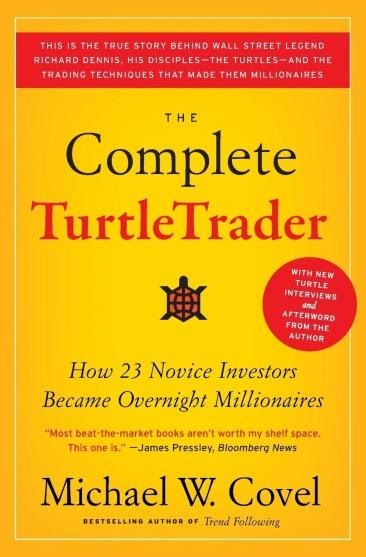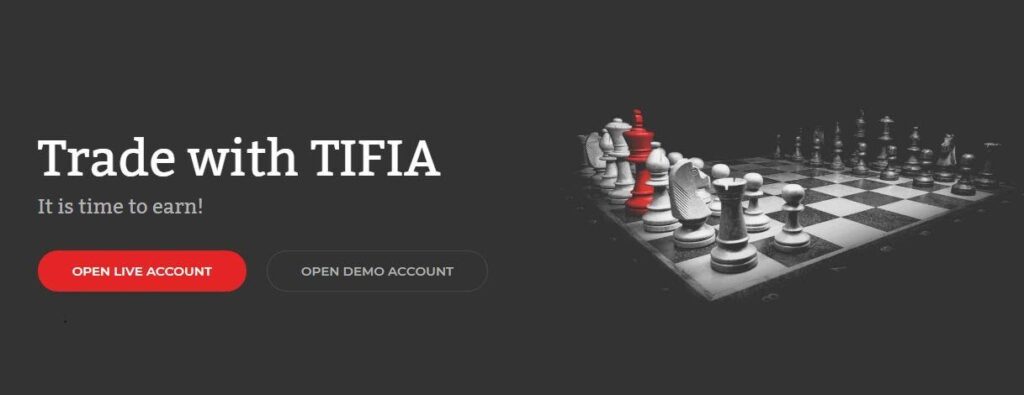Contents:

You would need to load up a truckful of items the grocer might accept in exchange for groceries. That would be an uncertain affair; you could not know when you headed for the store which items the grocer might agree to trade. Indeed, the complexity—and cost—of a visit to a grocery store in a barter economy would be so great that there probably would not be any grocery stores! The cost of equity is the rate of return required on an investment in equity or for a particular project or investment. Intrinsic value gives investors a gauge to determine how much they should pay for the shares.

Using discounted cash flow analysis, cash flows are estimated based on how a business may perform in the future. Those cash flows are then discounted to today’s value to obtain the company’s intrinsic value. The discount rate used is often a risk-free rate of return, such as that of the 30-year Treasury bond. Intrinsic value is a fundamental analysis framework used to determine the actual, true value of an asset. The intrinsic value of a company, for example, is more than just what the company itself is worth on the stock market.
- With some companies, intrinsic value can have severe changes in value from one year to the next.
- The next step is to calculate the present value of those earnings.
- These include white papers, government data, original reporting, and interviews with industry experts.
Experts point out that the term may have different meanings for different assets. Intrinsic value is also used in options pricing to determine how in-the-money an option is or how much profit currently exists. Generally speaking, intrinsic value can be considered to be how much the business is worth, as determined by selling off the whole business and its assets.
The end result is that most of the 53 cents per share from cash flow is reinvested to maintain the company’s overall market position. Thus, a value investor can use operating cash flow as the basis in the discounted formula; but, the investor must adjust this for the required investment to maintain the company’s overall market position. The task of risk adjusting the cash flows is very subjective and a combination of both art and science. Benjamin Graham and Warrant Buffett are widely considered the forefathers of value investing, which is based on the intrinsic valuation method.
A Basic Distinction in Moral Philosophy
Some analysts or traders may apply more weight to qualitative measures whilst others may favour a more quantitative approach. If the intrinsic value of a stock is less than market value, the stock is considered overpriced, and the investors relying on fundamental analysis will exit from it. A stock option gives its owner the right, but not the obligation, to purchase a security at a specific price over a predefined period of time.

Something’s instrumental value fluctuates based on changes in the desirability of the end to which it is a means and whether alternative, more efficient, means are available. For example, fishing line has instrumental value just in case a person wants to catch fish; and its value might diminish if a person gains access to a much more effective fishing net. It is uncontroversial that ecosystems and species possess a wide variety of instrumental values (e.g., cultural value, recreational value, medicinal value, spiritual value, transformational value, natural resource value, and ecosystem services value). What is contested is whether ecosystems and species have non-instrumental value, value as an end, or value in themselves as well (i.e., intrinsic value). In “What is Conservation Biology?” Michael Soulé discusses several “normative postulates” of conservation biology, including that “biotic diversity has intrinsic value” (Soulé 1985).
Other Forms of Valuation
As a result, these options may be sold for a much higher price than the investor paid for the option. That is, the intrinsic value is what an asset is actually worth, rather than its current market value, which is overly influenced by market conditions such as a recession or a speculative bubble. One may think of the intrinsic value of an asset as its value “in a perfect world,” because one may not always be able to receive the intrinsic value. For example, the intrinsic value of a baseball card may be $10,000, but if prevailing market conditions render investors uninterested in buying baseball cards, one may only be able to sell the card for $5,000. That said, the line between intrinsic and extrinsic value is sometimes blurry. The dividends grow at a real (inflation-adjusted) rate that ranges anywhere from 3% to 5% per year.
Well, there are several tools available to value investors to confirm or independently verify that this is a good range of values. In this case, using a discounted earnings tool, Coke’s intrinsic value is estimated at $36.03 over the next 30 years assuming a discount rate of 7.75% and a growth rate of 3.7%. Intrinsic value has several different definitions when used in the business context. Whereas value refers to the exchange mindset between two or more parties.
Therefore, traders who use this concept typically prefer to invest when the stock is trading below its intrinsic value and subsequently sell when it is above. Not every asset has cash flows, so not every asset has an intrinsic value. Because precious metals do not generate a stream of income, they have no intrinsic value—at least as measured using DCF. By a similar analysis, cryptocurrencies have no intrinsic value. One could say that the intrinsic value of a company is what it is really worth – its real value – while market capitalization is what investors on paper are willing to pay for the business – its price.
In his bookPrincipia Ethica, Moore asks whether the concept of intrinsic value is analyzable. In raising this question, he has a particular type of analysis in mind, one which consists in “breaking down” a concept into simpler component concepts. In place of analysis, Moore proposes a certain kind of thought-experiment in order both to come to understand the concept better and to reach a decision about what is intrinsically good.
A disadvantage to using this method is that it does not incorporate any future growth prospects for a company and might often give much lower intrinsic value estimations. Some companies may be too difficult to estimate intrinsic value with any reasonable degree of confidence. Examples could include startups with no sales or no profits as well as highly volatile companies in very competitive markets with an uncertain future.
How is an intrinsic value applied in options trading?
Investopedia’s Fundamental Analysis Course will show you how to calculate the true value of a stock and capitalize on undervalued opportunities. You’ll learn how to read financial statements, use ratios to determine value quickly, and more in over five hours of on-demand videos, exercises, and interactive content. A beta of one is considered neutral or correlated with the overall market. A beta greater than one means a stock has an increased risk of volatility while a beta of less than one means it has less risk than the overall market. If a stock has a high beta, there should be greater return from the cash flows to compensate for the increased risks as compared to an investment with a low beta. A financial analyst will typically use the company’s Weighted Average Cost of Capital when using this risk adjustment method.
What Was the COVID-19 Recession? Is There an End in Sight? – TheStreet
What Was the COVID-19 Recession? Is There an End in Sight?.
Posted: Mon, 28 Nov 2022 08:00:00 GMT [source]
As you will see, for an investment that pays $10,000 at the end of each year for 10 years with a 10% discount rate, the intrinsic value is $61,446. This view may hold the intrinsic values of several life stances as intrinsically valuable. The term “intrinsic value” is used in axiology, a branch of philosophy that studies value . All major normative ethical theories identify something as being intrinsically valuable. For instance, for a virtue ethicist, eudaimonia (human flourishing, sometimes translated as “happiness”) has intrinsic value, whereas things that bring you happiness may be merely instrumentally valuable.
Extrinsic vs. intrinsic value in stock options
Of course, over the short-term, the dividends can grow at different rates–sometimes they can even grow at negative rates, i.e, fall. Another type of metaphysical challenge to intrinsic value stems from the theory of “pragmatism,” especially in the form advanced by John Dewey [1859–1952] . This theme has been elaborated by Monroe Beardsley, who attacks the very notion of intrinsic value (Beardsley 1965; cf. Conee 1982). Denying that the existence of something with extrinsic value presupposes the existence of something else with intrinsic value, Beardsley argues that all value is extrinsic.
- This may seem to suggest that Kant ascribes intrinsic value only to a good will, declaring the value that anything else may possess merely extrinsic, in the senses of “intrinsic value” and “extrinsic value” discussed above.
- It also serves as a unit of account and as a store of value—as the “mack” did in Lompoc.
- Take a moment and consider the question as if the proposition were really there for you to take.
- If it is correct to distinguish between basic and nonbasic intrinsic value and also to compute the latter in terms of the former, then there is clearly a respectable sense in which nonbasic intrinsic value is derivative.
- For this reason, we’ll use the 6% discount rate going forward.
However, Buffett prefers to look and see if the https://forexarena.net/ margins themselves are consistently increasing as well. This shows the company is able to continue growing their profits. Under the DDM, the dividends issued by a company are assumed to be representative of the company’s financial health and future outlook. M1, the narrowest definition of the money supply, includes assets that are perfectly liquid. M2 provides a broader measure of the money supply and includes somewhat less liquid assets. Amounts represent money supply data in billions of dollars for October 2010, seasonally adjusted.
It also utilizes WACC as a discount variable to account for the TVM. The discount rate used with the discounted earnings formula here is different than the discount rate used in the dividend yield formula. In the dividend yield formula, the discount rate reflects a much improved overall risk position because it is dividends and not earnings.
Intrinsic Value of Stock
Firstly, gold does have intrinsic utility – it is required for specific scientific, medical, and manufacturing operations that are unique to it, so it has a real tangible value that no other element can replace, in addition to its ornamental usage . However, that utility doesn’t justify the value people put on it or its market value. An intrinsic value of $4 at expiry combined with the premium paid of $5 means the investor has a loss despite the option being in-the-money.

Beyond the https://forexaggregator.com/-free rate, many will adjust the discount rate high to reflect the risk of the business. For this reason, many analysts use a range of discount rates, similar to using a range of growth rates. DCF models commonly estimate cash flows for a limited time span of 10 to 20 years. At the end of that time, the model then uses a terminal value often based on a multiple of the cash flows in the final year. A market risk element is also estimated in many valuation models.

You might think that the S&P’s https://trading-market.org/ price of2070 is a reasonable price for a growthless security that pays out $110 a year. Suppose you had $100,000 in cash sitting around, earning nothing. Suppose further that there is nothing else on earth that you can invest it in but the “intrinsic” (i.e., can’t-sell) S&P 500, priced at 2070.







